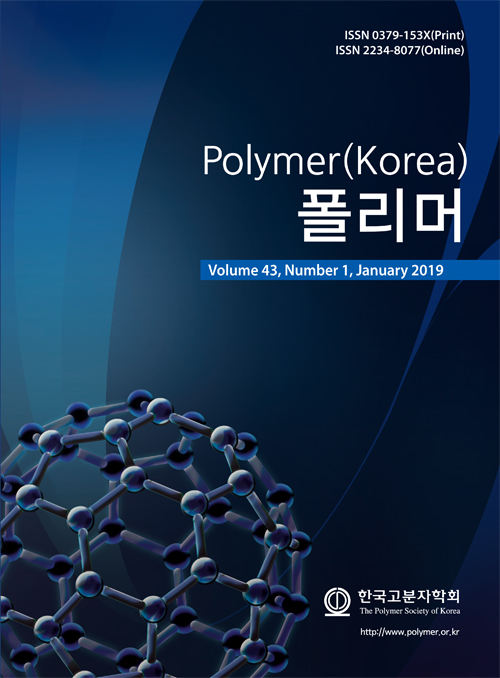- Synthesis of Semi-IPN Polymer Electrolytes Containing Binary Lithium Salt and Their Electrochemical Properties
Department of Engineering Chemistry, College of Engineering, Chungbuk National University, Cheongju, Chungbuk 28644, Korea
- 이성분 리튬염을 포함하는 Semi-IPN 고분자 전해질의 합성과 전기화학적 특성
충북대학교 공과대학 공업화학과
In this study, we have synthesized a poly(methylsiloxane-g-PEO) with ethylene oxide groups and prepared polymer electrolytes using lithium perchlorate (LiClO4) or LiClO4 with lithium methacrylate (BF3-LiMA). In the electrochemical measurement after UV curing of the polymer electrolyte, BF3-LiMA-introduced binary lithium salt had a high room temperature ionic conductivity of 2.63×10-5 S/cm and it was able to obtain relatively better electrochemical stability of 5 V. The prepared polymer electrolyte was then impregnated and crosslinked on the LMO electrode to fabricate a composite electrode, and a battery test consisting of a lithium/electrolyte/composite electrode was performed. As a result, although the high interface resistance of the oxidation electrode was observed in the binary lithium salt system, the capacity retention characteristic was better than that of the LiClO4 salt system.
본 연구에서는 에틸렌옥사이드기를 가지는 poly(methylsiloxane-g-PEO)를 합성하고 lithium perchlorate(LiClO4), 혹은 LiClO4와 lithium methacrylate(BF3-LiMA)를 함께 사용한 고분자 전해질을 제조하였다. 자외선 경화 후 이온전도도 측정결과 BF3-LiMA가 도입된 이성분 리튬염에서 2.63×10-5 S/cm의 높은 상온 이온전도도와 5 V 이하에서 상대적으로 더 우수한 전기화학적 안정성을 확보할 수 있었다. 또한 제조된 고분자 전해질을 LMO 전극에 함침 및 가교시켜 복합전극을 제작하였으며 리튬/전해질/복합전극으로 구성된 전지실험을 실시하였다. 그 결과 이성분 리튬염에서 산화전극의 높은 계면저항이 관찰됨에도 불구하고 단일성분 리튬염보다 우수한 수명특성을 확보할 수 있었다.
Keywords: polysiloxane, electrolyte, single ion, ionic conductivity, cycle performance
- Polymer(Korea) 폴리머
- Frequency : Bimonthly(odd)
ISSN 0379-153X(Print)
ISSN 2234-8077(Online)
Abbr. Polym. Korea - 2023 Impact Factor : 0.4
- Indexed in SCIE
 This Article
This Article
-
2019; 43(1): 69-76
Published online Jan 25, 2019
- 10.7317/pk.2019.43.1.69
- Received on Jul 21, 2018
- Revised on Aug 10, 2018
- Accepted on Aug 20, 2018
 Correspondence to
Correspondence to
- Sang-Woog Ryu
-
Department of Engineering Chemistry, College of Engineering, Chungbuk National University, Cheongju, Chungbuk 28644, Korea
- E-mail: swryu@chungbuk.ac.kr









 Copyright(c) The Polymer Society of Korea. All right reserved.
Copyright(c) The Polymer Society of Korea. All right reserved.